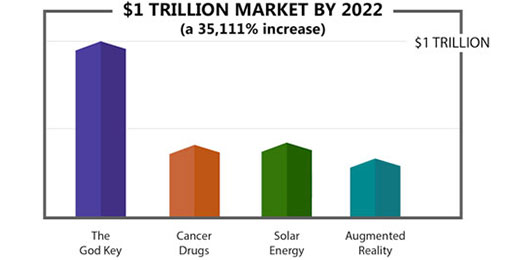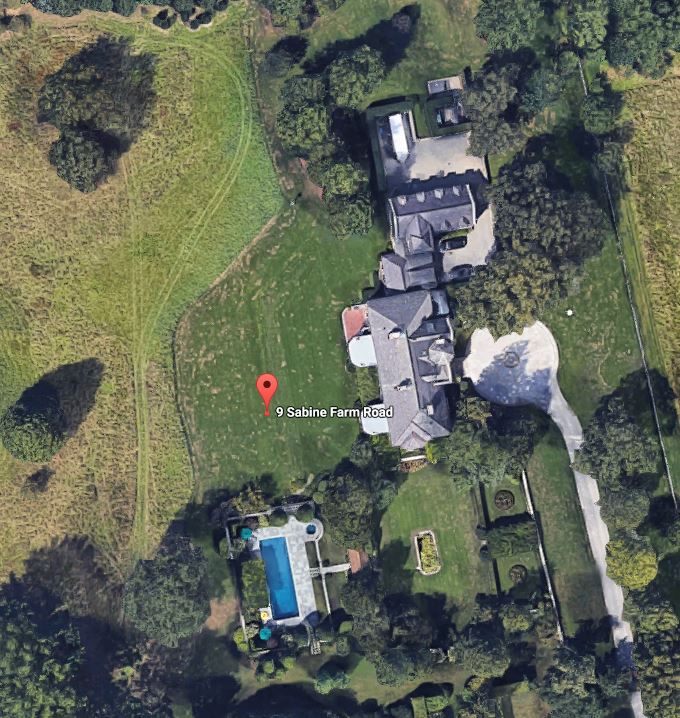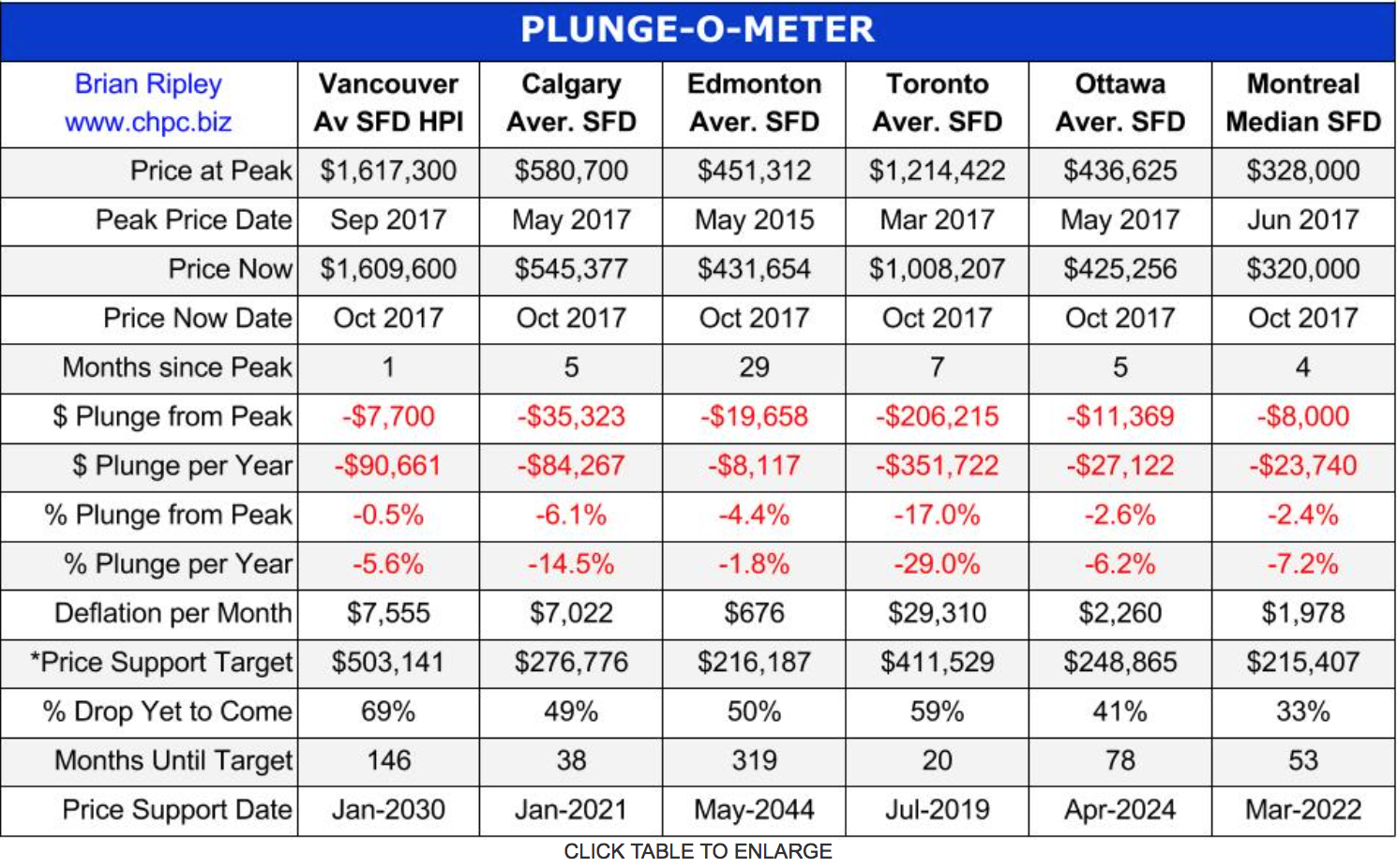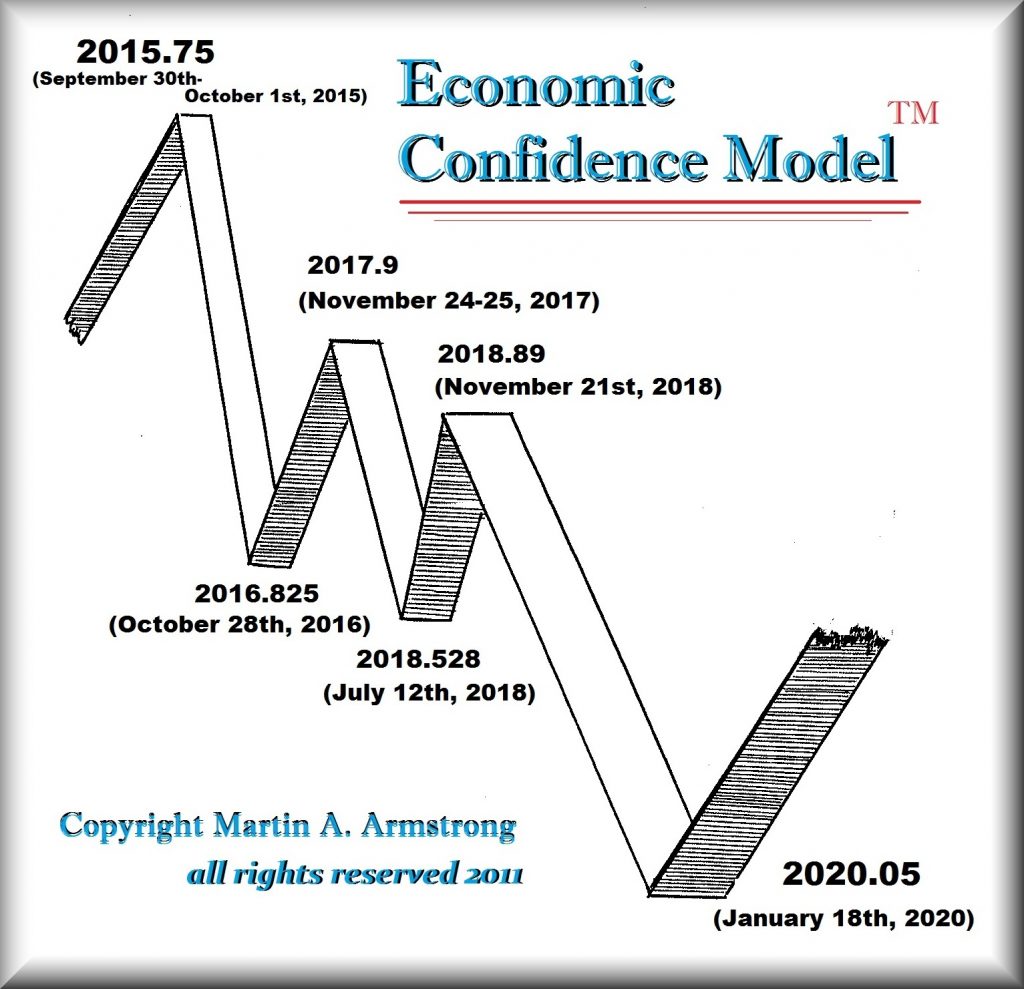Real Estate
Yesterday, we saw the soul of America.
We drove by a house so imposing… so monstrously ugly… so laughably pretentious that we almost drove off the road staring at it.
On a suburban lot, it was as though it had fallen off the delivery truck and rolled into place, with no thought as to its surroundings.
It was a fake mansion!
Yes, dear reader, it is all fake – our money, our economy, our markets, our government… even our mansions.

Bitcoin Bonanza
On Tuesday, we made another 10% gain on our bitcoin “investment”… at a rate of about $4,000 per hour.
That’s more money in one day than we made during our first 10 years of work – combined.
Our coins, formerly worth nothing, are now worth more and more.
At this rate – a 10% rise versus the dollar each day – if you make a $10,000 investment, before Christmas, you will have $100,000 or more. Or less.
Possibly much less…
We toiled not, neither did we spin. We invented not. We earned not. Not a single morning did we get up at the crack of dawn to earn that money… nor a single night did we stay up late studying to make it happen.
Instead, it was as though we had walked through a casino and randomly yanked on one of the one-armed bandits. Ka-ching!
Nor did we learn anything… except that it’s a mad, mad, mad, mad, mad world – which we already knew! And if Civilization author Clive Bell is right, this is the best kind of money. We didn’t distract ourselves from “thinking and feeling.” We have no coal dust under our fingernails… and no hands calloused by years of hard work.
Easy Come, Easy Go
What to make of it? Is bitcoin money fake, too?
Tomorrow, we’ll have a report directly from our in-house expert, who is attending a conference on cryptocurrencies this week. More than 1,700 people paid $1,500 each to attend, representing the “smart money,” including a handful of newly minted millionaires still with adolescent pimples on their faces and bitcoins in their electronic wallets.
Meanwhile, here’s a thought… and a feeling. We invite dear readers to print this out and put it on their refrigerators:
Bitcoin is not an investment. It is not a speculation. It may or may not be a durable form of money; time will tell.
You may make a lot of money in the bitcoin bubble. Or lose it. Either way, don’t take it seriously. You should treat it like a dollar bill on the sidewalk. If you are lucky, you will pick it up before it blows away. If you are unlucky, you will chase it into the busy street and be struck by a crosstown bus.
Easy come, easy go – like an uninvited relative. Neither celebrate its coming… nor shed a tear at its departure.
What good is such money?
Coat on a Stick
Most of the world is so caught up in getting and spending money that it hardly has time to notice the leaves.
And maybe it is better off for it.
A man puts his head down… he keeps his eye on the ball and his shoulder to the wheel… and he’s ready to make money. Or war.
And then, by the time his hair whitens and he retires from making money, it is too late. His sclerotic brain can learn no more new tricks. It has no flexibility… and no time to develop real taste and judgement.
That’s why the “self-made man” may be the least civilized of the species.
He is too busy to think and feel. He is getting rich in his youth. And then, when he is spending… that’s where the disaster of his life becomes apparent.
He has not taken the time to prepare himself. He cannot appreciate style… or wit… or charm… or intimacy.
In retirement, when he can no longer do the only thing he knows how to do – make money – he is nothing more than a coat on a stick rambling around a house far too big for him, a laughingstock to the young… an embarrassment to the old.
Built on Credit
You can judge for yourself: Architectural Digest offers a list of “The Most Beautiful Home for Sale in Every State in America.”
Actually, it is just a list of houses for sale. Those that make the list are the most expensive ones. That is, for the most part, they are the houses of rich, “successful” people who have since gotten a divorce or otherwise moved on and now need to sell their dream homes.
The houses are more like nightmares.
Gaudy, bombastic, clumsy, awkward, hollow, appalling monstrosities. And they are all over America.
A Greek column here… an Italianate arch there… an English gable over the four-car garage… and a Versailles kitchen – they are an amalgam of hodgepodge.
We have been offended by McMansions for years. But the houses of the rich… these are what McMansions aspire to be. They are what you get when you put a hack architect together with a rich man. Neither of them has the sense of style, modesty, proportion, or charm you need to create a beautiful dwelling.
They’ve both been too busy earning and spending money; neither really knows how to build a home with grace or wit. All they can do is build a big, expensive one: a fake mansion.
What you get is a $16 million pile in Arizona and a huge palace for $45 million in Santa Barbara. One rich man builds; another buys. They advertise their wealth and bad taste simultaneously.
And here we see the whole flimflam exposed. These are the houses of the richest and most successful people in the country. They should proudly exhibit the finest that the “One Percent” can buy – the careful aesthetic judgment of the elite… the well-honed vernacular architecture of the world’s greatest empire at the peak of its power.
Instead, they are pathetic imposters. Too large to be livable. Too empty and monumental to be cozy. Too many angles… too many features… too much marble and stone – they are a “hormegeddon” to the domestic housing market. (See our book on the subject.)
They show not only the shallowness of its leading citizens, but also the emptiness of a late, degenerate, bubble-financed empire.
Regards,
Bill

The high-end market in Connecticut is starting to decline. The hedge fund manager Stanley Druckenmiller bought his estate in 2004 for $23 million. He had it on the market for $31.5 million. The best offer he got was $25 million. He took the money and ran. Smart move! With a real estate tax of about $154,000 annually, looks like a break-even deal after 13 years.
The high-end real estate boom is now turning sour. We are looking at property values declining in London, Australia, New Zealand, Hong Kong, New York, and even Miami. The shift will now turn toward MOVABLE assets as capital departs from the fixed asset class.
….also from Martin:
 According to the latest property transfer data released by the British Columbia government, the proportion of sales involving foreign nationals in Metro Vancouver inched up between April and September.
According to the latest property transfer data released by the British Columbia government, the proportion of sales involving foreign nationals in Metro Vancouver inched up between April and September.
The data showed that 5% of the 6,105 property transfers in September involved foreign nationals, up from 2.5% in April.
This remained far below the percentage of foreign nationals buying homes before the former Liberal government implemented a 15% foreign buyers’ tax in August 2016 in an effort to cool the hot housing market, The Canadian Press reported.
The B.C. Finance Ministry previously reported that from June 10 to August 1, 2016, 13.2% of all property transfer transactions in Metro Vancouver involved foreign buyers.
Despite attempts to improve housing affordability, the Real Estate Board of Greater Vancouver said in August this year that the typical price of a home in Metro Vancouver had surpassed $1 million.
Read more: Vancouver condo market in demand
The New Democrat government has said that it is reviewing transaction data along with the foreign buyers’ tax and an interest-free loan program for first-time homebuyers in an effort to decide whether such measures should be kept, revised, or scrapped altogether.
Among municipalities, Richmond saw the highest rate of foreign buyers between April and September this year at 8%, while foreign buyers accounted for 4.3% of sales in both the city of Victoria and the surrounding Capital Regional District.
The tax only applies residential real estate in Metro Vancouver.
There were a total 84,139 property transfers in B.C. between April 1 and September 30. Foreign nationals were involved in 2.8% of those transfers, representing more than $2 billion.
Related stories:
Activity in Toronto, Vancouver continues to recover
Western Canadian commercial real estate trends
In October 2017 Toronto metro SFD prices hung on to their recent correction high but after 7 months since the March 2017 spike and peak price, they have lost $206,215 or 17%
(Plunge-O-Meter). Vancouver prices are still defying gravity; FOMO and speculative pricing is still on.
Anyone owning a detached house in the scorching hot Vancouver market is sitting on an unredeemed lottery ticket with time running out as buyers hibernate into the seasonal decline. The Bank of Canada interest rate up-moves is thinning the crowd even more.
….read more about Calgary & the CMHC
….also the plunge-0-meter:

*The Price Support target represents prices at March 2005; the start of a 40 month period of ardent speculation in all commodities; then a full blown crash into the pit of gloom (March 2009); and then another 39 month rocket ship to the moon but then the crowd suddenly thinned out in April 2012. The revival of spirits erupted in 2013 as global money went short cash and long real estate on an inflation bet. Now we have a major sense of doubt about value in Toronto.
Plunge-O-Nomics
The Pit of Gloom
- ’07-’08 Average Vancouver SFD lost $122,900, or 15.9% in 8 months (2%/mo drop)
- ’07-’08 Average Calgary SFD lost $92,499, or 18.3% in 18 months (1%/mo drop)
- ’07-’08 Average Edmonton SFD lost $78,719, or 18.5% in 21 months (0.9%/mo drop)
- ’07-’08 Average Toronto SFD lost $63,867, or 13% in 13 months (1%/mo drop)
- ’07-’08 Average Ottawa Residence lost $25,664, or 8.6% in 6 months (1.4%/mo drop)
- ’07-’08 Median Montreal SFD lost $6,000, down 2.6% in 6 months (0.4%/mo drop)
A funny thing happened to commodities in October. They went up. All of ’em. Or nearly all. Enough that the CRB Index busted out like an escaped felon with nothing to lose.
This index tracks a basket of 19 commodities. It’s energy-heavy – 33% by weight. But it is stuffed with everything from cocoa to copper, hogs to gold.
And as a group, these things are headed higher. And higher.

That tells us a lot about the global economy. And if you listen closely, the CRB’s price action will even tell you where to invest. To make handsome profits.
I’m talking about things that do well in global reflation.
What is global reflation, anyway? It’s when economic growth picks up all at the same time. Along with that, we see prices start to climb up.
That price climb is delayed a bit – for now. But economic activity is definitely accelerating.
How do we know that? Well, here in the U.S., GDP is expanding at about 3%. That’s after expanding at 3.1% in the second quarter. That’s better than the listless growth we saw during the Obama years.
And around the world, the IMF is boosting GDP forecasts for almost every advanced economy.
And here’s more proof: The number of countries in recession around the world has fallen to its lowest level ever. Ever!

So, what should you invest in for the global reflation trade? There are a BUNCH of things that do very well. But let me give you one group to buy … and one to SELL!
Buy: Metals
Let’s start with copper. It’s the most industrial metal on Earth. It’s used for everything from buildings to electronics.
And copper is also vital to the electric vehicle megatrend. Copper is NOT in electric-vehicle batteries. But it’s in everything else in an EV. On average, an EV has three to four times the amount of copper wiring that an internal combustion engine car contains.
This means a huge amount of copper is going to be in demand in the future. I talk about copper a lot in this space and in my trading services because its potential is so enormous.
Nickel is another industrial metal I pounded the table about. It’s used to make everything shiny, from silverware to steel. AND nickel is an important part of EV batteries. So, it’s going to ride the EV megatrend, too.
I told you about the industrial metals rally in August. I showed you a chart of …
- The PowerShares DB Base Metals Fund (DBB), which tracks a basket of aluminum, copper and zinc.
- The iPath Bloomberg Copper Subindex Total Return ETN (JJC), which focuses on copper.
- And the iPath Bloomberg Nickel Subindex Total Return ETN (JJN), which targets nickel.
Let’s see how you would have done if you’d bought ANY of my picks then.

Both copper and base metals have outperformed the S&P 500 since that issue ran. The real winner is nickel. A 28% gain. Wow!
I haven’t talked about gold or silver. Yet. Don’t worry, their day is coming. Especially as we start to see prices go higher.
Speaking of inflation, let’s get to my “sell” pick …
Sell: Bonds
There is already inflation in China and other “factory” economies. Stateside, we’re saved from that by technological innovation. But inflation will start to pass through.
Rising inflation tends to mean higher interest rates set by central banks. And that means Treasury yields will trend higher. And as yields go higher, prices go lower. That’s the simple fact.
To dig a bit deeper, negative interest rate policies have reached their limit in Europe and Japan. That means the deflation trade has run its course. The pendulum is going to swing in the other direction.
So, think about selling bonds. You can even short bonds through inverse funds. An example would be buying the ProShares Short 20+ Year Treasury ETF (NYSE: TBF). Speculators could consider buying the Direxion Daily 20-Year Treasury Bear 3X (NYSE: TMV).
The global reflation trade is here. It’s one of those megatrends I plan to keep talking about, because you should be aware of it. You can ride it to potential profits, or ignore it at your peril. Whatever you buy, do your own due diligence.
All the best,
Sean Brodrick















